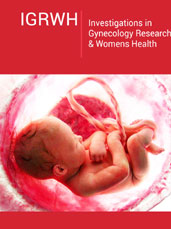Cesarean Section Epidemic in Iranian Midwives_ Crimson publishers
Cesarean Section Epidemic in Iranian Midwives by Somayeh M in Womens Health Journal
Opinion
In the last century, caesarean section (C/S) has played a positive role in settling pregnancy complications and reducing the fetal and maternal mortality, but a worrying issue in modern midwifery is the high rate of C/S. According to the World Health Organization, the C/S rate should not exceed 10-15% of all births in any part of the world, but published statistics in many parts of the world, especially in Iran, differed greatly from this ratio and are very higher. C/S is a major operation that has complications such as maternal death, hemorrhage, infection, need for blood transfusion, dense internal adhesions, thromboembolic, urinary retention, bladder injury, and anesthetic complication. Furthermore, an increase in the rate of C/S in a country may cause a high cost to the health system. In recent decades, it seems that there is a general tendency for C/S among both health care givers and providers. Among midwifery personnel and students there are also those who believe that C/S is the most appropriate method of delivery, while others believe that C/S is a very large operation with many complications. It is obvious that awareness of the health care givers’ performance toward choosing a delivery method for their own pregnancies is important for health policies related to decrease C/S rate.
Because the performance of the medical staff, especially midwives, in choosing the type of delivery can directly affect the performance of pregnant mothers. The results of our recent study showed that only 22.5% of the midwives of an educational large hospital in Ahwaz, Iran had had normal vaginal delivery in all their own pregnancies. 66.3% of the midwives mentioned the history of one to three planned C/S and 11.2% of them had experienced the C/S after normal vaginal delivery. 33.8% of the cesareans were elective. 74.1% of those who were selected the C/S stated that if they return to the past, they will repeat that again. About 25% of the participants suggested that C/S is more appropriate than normal vaginal delivery to terminate uncomplicated pregnancies for mothers who will eventually have two to three pregnancies in their lifetime. According to these results it seems that even though midwives learn more about the complications of C/S, they tend to be more willing to do this for termination of their own pregnancies. The reason for this may be due to the experience of working in maternities and seeing the suffering of labor pain in clients. One of the other possible reasons may be this fact that the elective C/S is a clean operation and an effortless method of birth. Considerable findings of our study are a serious warning about the high rate of C/S among midwifery personnel in Iranian medical community. Trying to root these results is very necessary, because the midwives have a strong role in guiding pregnant women for decision making about mode of delivery.
https://crimsonpublishers.com/igrwh/fulltext/IGRWH.000545.php
For more Open access journals in Crimson publishers please click on the link https://crimsonpublishers.com/
For more articles in Gynecology Journal please click on the link https://crimsonpublishers.com/igrwh/
For more about Crimson Publishers please click on the link: https://publons.com/publisher/6342/crimson-publishers




Comments
Post a Comment